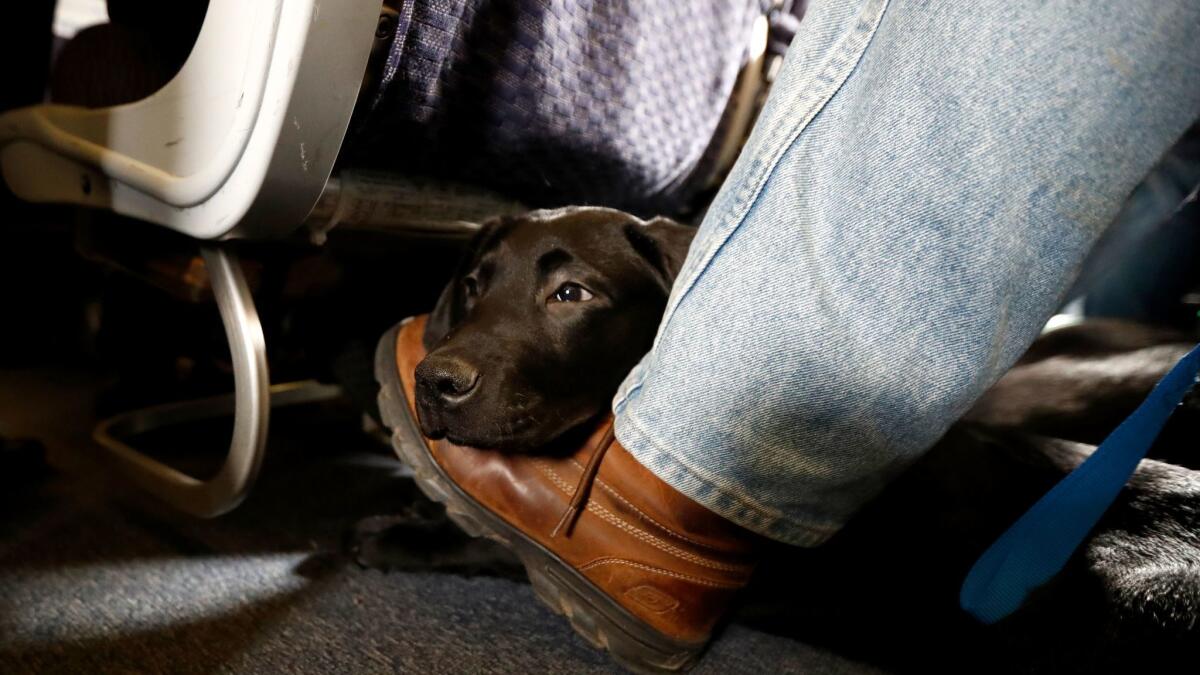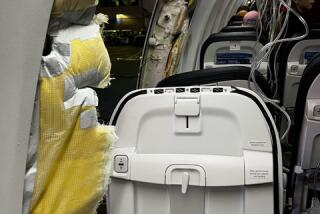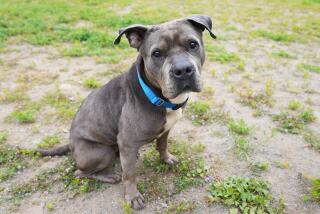Opinion: By the way, United has the worst U.S. record on pet deaths, too

Editor’s note, March 14, 2018: This 11-month-old opinion piece has been widely shared on social media in recent days following United Airlines’ move to apologize for the death of a dog that was put — at the instruction of a flight attendant and in violation of airline policy — in an overhead compartment. Here is our most recent report on that incident.
As if you needed another reason to think twice before booking a ticket on United Airlines, which breathtakingly dragged a passenger off a flight this week, here is one: United had the worst record of U.S. airlines on pet deaths on planes in 2016, according to a recent report from the Department of Transportation’s Air Travel Consumer Report. That would be the second year in a row that the airline has earned that unfortunate distinction. In 2016, nine pets — eight dogs and a Sphynx kitten — died under the airline’s care and 14 suffered injuries — mostly canine mouth and gum injuries from chewing (probably in agitation) on the grating on their crates. “Self-inflicted,” the airlines call those injuries. That was out of 109,149 animals transported. So the vast majority survived their trips without incident. But, of course, any pet death is horrible.
At least the 2016 number of deaths was down from 2015. That year, the airline had 14 deaths and nine injuries (yes, the reverse of the 2016 stats) out of 97,156 animals transported.
Based on necropsies that the airline ordered, United concluded that most of the 2016 deaths were from natural causes — heart failure, arteriosclerosis, respiratory failure “associated with brachycephalic breeds,” the dogs and cats with pushed-in faces. The airline absolved itself of any responsibility for the deaths except in the case of a 7-year-old American Staffordshire terrier that died from heat stroke at an airport in San Salvador before departure. And even there, the airline sort of absolved itself, saying that there were no reports of extreme weather — but that they were “reviewing the internal process” at the airport anyway. And the kitten died of “pulmonary edema.”
But some owners whose dogs died on United flights — or just afterward — have accused the airline of shoddy treatment of their beloved pets.
In February, Kathleen Considine took to Facebook to describe her ordeal with United over the death of her 7-year-old, 80-pound golden retriever, Jacob, who was supposed to fly from Detroit to Portland with a one-hour layover in Chicago. Due to his size, he couldn’t be placed on the connecting flight, so he was put up overnight in a Chicago kennel. The next day he was placed on a flight to Portland. He arrived disoriented and Considine rushed him to a vet’s office, where he died. “His stomach flipped due to the stress of his journey that was 20 hours longer than expected, and suffocated his organs,” Considine wrote online. “United Airlines is assuming zero responsibility for the death of my best friend.” She has since started an online petition to get the FAA to allow airlines to transport larger dogs in the airplane cabins.
In 2012, fashion model Maggie Rizer flew two of her golden retrievers on a United flight from New York to San Francisco. When she and her family went to pick up the dogs, according to her account, an airline worker casually greeted them with the news that “one of them is dead.” A necropsy found that the dog died of heatstroke. United issued a statement at the time stating that the dog had been in a temperature controlled environment the entire trip.
Around the time of the incident with Rizer’s dog, United flew a 2-year-old Neapolitan mastiff from Miami to San Francisco with a three-hour layover in Houston. When its owner, Michael Jarboe, boarded the plane in Houston, he looked out on the tarmac and was alarmed to see his dog in his kennel on a luggage cart panting heavily in the 95-degree heat. The dog, Bam Bam, was dead on arrival in San Francisco. The cause of death was deemed “cardiovascular collapse.” The airline insisted that the dog was in a special, well-ventilated holding area for most of the wait time. (The airline refunded the dog’s transport fee.)
The Humane Society of the U.S. just flat out says air travel can be risky for pets and especially dangerous for brachycephalic breeds — such as pugs, bulldogs and Persian cats, whose short nasal passages make them vulnerable to oxygen deprivation and heat stroke.
When my cat, Arnold, who was a domestic shorthair, was alive, I flew regularly with him. We were lucky. I found flight attendants and baggage handlers attentive and kind. He always traveled in a large kennel, so I had to check him as baggage. But I kept the kennel with me as long as I could, sometimes taking it with me to the departure gate before surrendering it to the agents. (This was in the days before 9/11.) Once, as I sat at the gate with Arnold, flight attendants there told me just to bring him on board since the flight wasn’t crowded. (Again — these were the good old days.) They said they’d find a place to stash the kennel. I boarded, handed over the kennel, and found my seat in coach. After we were in flight, an attendant came by to tell me they had found a good place for him — they had strapped his kennel into an empty seat in first class. I wanted to ask if Arnold and I could change places.
The Humane Society suggests flying with your pet in the cabin if possible — and if the pet must fly in cargo, check the airline’s animal incident reports, take a direct flight, and ask if you can watch your pet being loaded into the cargo hold.
OK, one more Arnold story: In addition to all the ID tags on his kennel, I would tape on an index card that read, “I am Arnold the cat. My final destination is …” with an address and a phone. At the end of one flight, I collected Arnold at baggage and found that someone had scrawled on the index card: “It was a pleasure to fly you, sir.”
Now, if only airlines would treat their passengers that well.
To read this article in Spanish click here
Follow the Opinion section on Twitter @latimesopinion and Facebook
More to Read
A cure for the common opinion
Get thought-provoking perspectives with our weekly newsletter.
You may occasionally receive promotional content from the Los Angeles Times.







